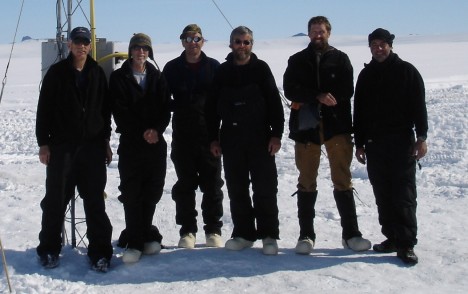By Bob Bindschadler
Christchurch (New Zealand), 29 November — I realized as the moment approached to get in the car and head for the airport that I have been mentally drifting south over the past couple of days. Going over the list of what to pack, then packing, and then mentally running through what I packed, caused me to try to envision every situation I might encounter (at Pine Island, McMurdo Station and even in New Zealand) and what I wanted to be sure to have. “Where’s my ear sweater?” “I need to find my down booties.” Those were the kind of thoughts going through my head. Personal comfort is a big deal in Antarctica—although you can’t take everything with you, when the weather gets nasty you want to have the right stuff.
These same scenes are being played out in other locations; every member of our team is experiencing something very similar as they pack their bags and run through their own list of possible upcoming situations in their minds. Successful Antarctic field work is very much about accurately anticipating what is likely to happen so you are prepared beforehand. When you forget a tool, help is usually very far away and can’t be counted on. You learn to make do with what you have.

Everyone on the team understands this and is preparing accordingly. When our proposal was first submitted, I called them the Dream Team. Some reviewers were offended by the term, but it’s a good way to express the fact that we have the best Antarctic geophysicist, the best engineer of polar oceanographic instrumentation, the best ocean-ice boundary layer oceanographer, the best developer of ice borehole instrumentation and the best lightweight hot water drillers on the planet. Our collective years of polar field experience are measured not in months or years, but decades. I’m extremely proud of the team we have and am confident that if we can’t do this job, this job can’t be done.
Tomorrow, most of us will meet again for the beginning of two months together. We have flown to Christchurch, New Zealand from places scattered across the US: Alaska, California, Pennsylvania, Arizona and Maryland. We come here to receive our cold-weather clothing the National Science Foundation provides us. We try it on for size, change whatever doesn’t fit, return what we don’t want and request special items of personal preference. Each kit will be different in hidden details of shirts, vests, and even underwear, but in the end we all will probably have the same black ski pants/red parka exterior that scientists in the US Antarctic program take on. Good clothing is important—it’s what keeps you warm. You pay attention to what you are given and what you take with you to “The Ice”.
Tags: Antarctica, Christchurch, glacier, McMurdo, NASA, Pine Island Glacier, sea level rise



